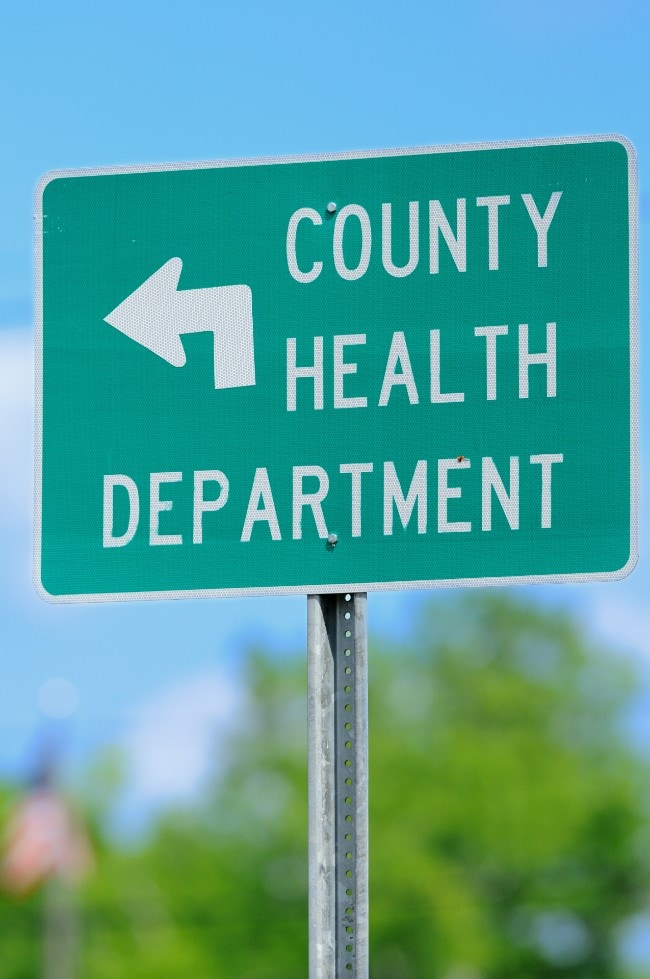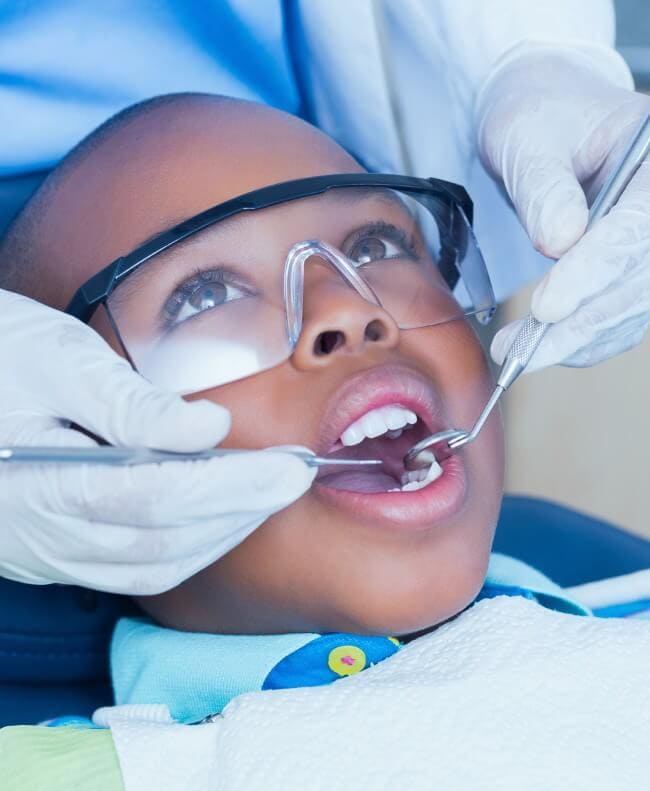Division of Oral Health At A Glance

- Collecting Data to Monitor Progress in Oral Health
- Promoting Optimal use of Community Water Fluoridation to Reduce Cavities
- Promoting School Sealant Programs to Prevent Cavities
- Preventing Infections in Dental Care Settings Through Guidelines and Training
- Supporting Programs and Partners to Improve Oral Health
CDC’s Division of Oral Health (DOH) promotes proven interventions such as optimally fluoridated water and dental sealants to reduce the rate of cavities, especially for populations at highest risk. DOH supports state and territorial oral health programs, collects surveillance data on oral diseases, and develops and promotes adherence to infection prevention and control guidelines for dental health care personnel. The division supports the integration of medical and dental care to address other chronic diseases associated with poor oral health. DOH also strengthens the dental public health workforce with a residency training program.
What We Do

With an FY 2021 budget of $19.5 million, DOH focuses on improving oral health and achieving health equity, which is when every person has the opportunity to attain their full health potential. To meet these goals, DOH works to:
- Measure how cavities and other oral diseases affect populations in the United States.
- Study interventions to find out and promote what works best to prevent cavities and gum disease.
- Fund and guide states and territories to maintain oral health infrastructure, use proven interventions, and evaluate programs.
- Share information to help all people living in the US have better oral health and keep their natural teeth longer.
Why We Do It
Oral health affects our ability to speak, smile, and eat. It also affects self-esteem, school performance, and attendance at work and school. Oral diseases—which range from cavities to gum disease to oral cancers—cause pain and disability for millions of people living in the US. More than 40% of adults have felt pain in their mouth in the last year, and among children and adolescents aged 5-17 years an average of 34 million school hours are lost each year because of unplanned (emergency) dental care. About 100 million people living in the US do not have access to fluoridated tap water, and 6 in 10 children do not get dental sealants.
In the United States:
1 in 2 CHILDREN
aged 6 to 8 have had a cavity in at least one of their baby (primary) teeth.
1 in 4 ADULTS
has untreated cavities.
46% OF ADULTS
over 30 show signs of gum disease.
$45 BILLION
in lost productivity is due to untreated dental disease.
How We Do It
CDC analyzes data to monitor progress in meeting the oral health objectives in Healthy People 2030, the nation’s agenda for improving the health of all people living in the US. One of these objectives is to increase use of the oral health care system. This objective is also one of 23 high-priority Healthy People 2030 objectives called Leading Health Indicators.
CDC uses an online system called Oral Health Data to bring together data from the National Oral Health Surveillance System and other sources, like state oral health surveys, Behavioral Risk Factor Surveillance System surveys, and water fluoridation statistics. Users can export information into several formats to create tables, charts, and maps.
CDC also helps state health departments collect, interpret, and share local and state data on oral health and the use of preventive services. States and communities use the data to monitor their progress in meeting their oral health objectives and to set program priorities to reach people with the greatest needs.
Examples of Our Impact
- The National Health and Nutrition Examination Survey (NHANES) measures how many children aged 6 to 11 have cavities and dental sealants. In 2011–2016, NHANES found that fewer than 4 in 10 children from lower-income households got dental sealants. These children are almost 15% less likely to have dental sealants and twice as likely to have untreated cavities as children from higher-income households. School sealant programs are a great way to deliver sealants to children at high risk of cavities. CDC currently funds 20 states and one territory to support oral health programs and expand sealant delivery in schools in low-income and rural areas.
- States use CDC’s Water Fluoridation Reporting System (WFRS) to monitor the quality of their water fluoridation programs. Consumers are able to access WFRS information through My Water’s Fluoride and learn basic information about their community water system, including the number of people served by the system and the fluoride level. CDC also recognizes those public water systems that meet optimal fluoridation level goals with annual quality awards.

Community water fluoridation is recognized as 1 of 10 great public health achievements of the 20th century. Even with the widespread use of products with added fluoride, like toothpaste, studies have found that people living in communities with water fluoridation have 25% fewer cavities than those without fluoridation.
CDC works with state and national partners to optimize the use of water fluoridation by training state drinking water system engineers and oral health and other public health staff. In 2019, DOH released a new interactive training called Fluoridation Learning Online.
CDC also manages an online reporting system that helps states monitor the quality of their water fluoridation programs. The public side of this database, My Water’s Fluoride, allows residents in participating states to learn the fluoride content of their public water system.
CDC also supported the development of a fluoride tablet delivery system to help small public water systems (those that serve 50 to 10,000 people) provide fluoridated water. This new technology became available in 2021 and makes water fluoridation feasible for small water systems. These new tablets could bring fluoridated water to about 19 million people who are served by the nearly 32,000 nonfluoridated small systems in the United States.
Examples of Our Impact
- CDC is working toward the Healthy People 2030 objective of 77.1% of the population being on community water systems that have optimally fluoridated water. Fluoridation of public water systems increased from 62.1% in 1992 to 73.0% in 2018.
- Communities served by fluoridated water save an average of $32 per person a year by avoiding treatment for cavities.

One in five children aged 6 to 11 years has at least one untreated cavity, which can lead to problems eating, speaking, and learning. Dental sealants protect against 80% of cavities for 2 years and continue to protect against 50% of cavities for up to 4 years. Children aged 6 to 11 years without sealants have almost 3 times more first molar cavities than children with sealants.
Sealant use increased by about 75% among low-income children and remained at about 43% among higher-income children from 1999–2004 to 2011–2016. However, this effective intervention remains underused; less than half of children aged 6 to 11 have dental sealants.
School sealant programs provide dental sealants at no charge to children who are less likely to receive private dental care. These programs provide sealants at school during the school day using mobile dental equipment. CDC provides guidance to state and community programs to help them plan, set up, and evaluate school sealant programs and to complement services provided by private dentists. CDC also created SEALS, a tool that allows state and local programs to evaluate the effectiveness of their sealant programs.
Examples of Our Impact
- School sealant programs that are delivered to children at high risk of tooth decay can be cost-saving for Medicaid after 2 years.
- Applying sealants in schools to the nearly 7 million low-income children who don’t have them could prevent more than 3 million cavities and save up to $300 million in dental treatment costs.
Dental health care settings must meet the same high standards for infection prevention and control as any medical setting. To help reduce the risk of disease transmission, CDC develops recommendations to guide infection prevention and control practices in all dental treatment settings.
In 2016, CDC published the Summary of Infection Prevention Practices in Dental Settings: Basic Expectations for Safe Care. This resource includes current recommendations from CDC and a checklist to measure compliance. The recommendations guide infection prevention practices in dental offices nationally and globally and provide direction for dental health care personnel.
CDC offers several resources to support adherence to its infection prevention and control recommendations. Examples include a mobile app called CDC DentalCheck, screening forms, frequently asked questions, and a set of training materials for educating staff. In 2021, CDC released an online training called Foundations: Building the Safest Dental Visit that offers dental continuing education credit hours to individual learners.
Examples of Our Impact
- CDC’s Summary of Infection Prevention Practices in Dental Settings: Basic Expectations for Safe Care and accompanying materials have been downloaded over 62,000 times, making it one of CDC’s most popular resources.
- CDC DentalCheck is available on Android and iOS devices and has been downloaded more than 24,000 times.

CDC provides 20 states and one territory with funds, technical assistance, and training to build strong oral health programs. This support helps recipients promote oral health, monitor oral health behaviors and problems, and conduct and evaluate prevention programs. It also helps recipients better coordinate community water fluoridation programs and school dental sealant programs and develop ways to better integrate dental and medical care.
CDC funds two national partners to support these efforts—the Association of State and Territorial Dental Directors (ASTDD) and the National Association of Chronic Disease Directors (NACDD). ASTDD provides assistance and resources to recipients and assesses all state programs. NACDD supports the integration of oral health programs with other chronic disease programs.
DOH also works with other chronic disease programs to promote prevention strategies designed to reduce risk factors associated with multiple chronic conditions, including gum disease. In addition, CDC works to produce skilled specialists in dental public health through its Dental Public Health Residency Program.
Examples of Our Impact
- The Maryland Department of Health and Mental Hygiene used CDC funding to add screening, counseling, and referrals for high blood pressure to existing oral health programs. Staff worked to raise patient awareness about the relationship between oral health and overall health, including the connection between oral health and high blood pressure.
- The Georgia Department of Public Health used CDC funding to educate oral health providers, obstetricians and gynecologists, and pregnant women about the effects of tobacco exposure on mothers and babies. Georgia’s Oral Health Program developed a tool kit and trained 62 oral health providers and health department staff on the Ask, Advise, and Refer model for tobacco cessation. These efforts led to a 20% increase in quitline callers who reported being referred by an oral health provider.

The Challenge
Children from low-income households are twice as likely to have cavities as children from higher-income households.
Although dental sealants are an effective way to prevent cavities, children from low-income households are 15% less likely to get this service.
CDC’s Approach
School sealant programs are a great way to deliver sealants to children at high risk of cavities. CDC currently funds 20 states and one territory to support oral health programs and expand sealant delivery in schools in low-income and rural areas.